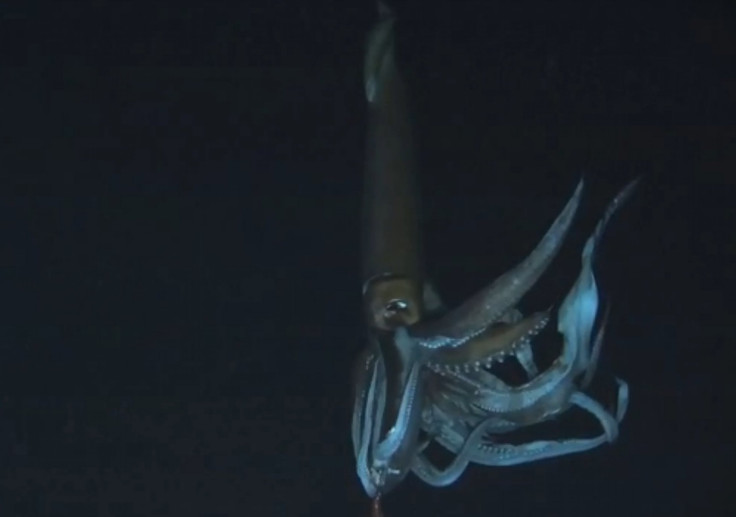Giant Squid Mystery: Scientists Say Elusive Creatures Are Genetically ‘Basically Identical’

Although very little is known about giant squid, a new study conducted by the University of Copenhagen has uncovered evidence that the notoriously elusive creatures are all part of the same species.
The study was led by an international team of researchers from the University of Copenhagen along with colleagues from Australia, Japan, France, Ireland, and Portugal, who compared DNA extracted from 43 soft-tissue samples, the BBC reported.
The DNA samples came from an array of different sources, including squid that had washed ashore or been accidentally caught by fishing trawlers; some were found in the stomachs of stranded sperm whales.
DNA sequencing of the samples turned up surprisingly low evidence of genetic diversity.
"There's normally local distinction between [animals] genetically," M. Thomas P. Gilbert, a professor from the Natural History Museum of Denmark, told the BBC. "Things that live in one area eventually become different from things in other areas but [giant squid] are basically identical everywhere."
Gilbert said the group’s findings are “very weird,” given the great range of distance among sites where samples were collected, and the physical dissimilarities between those giant squid.
"Your general [giant] squid is a long, scrawny beast: it's got a long thin body and long thin arms," Gilbert said. "But off [the coast of] Japan for example, they're much shorter and stubbier. Their arms are fatter and much shorter."
Gilbert said the study's results, which were published in the journal Proceedings of the Royal Society B, suggest that giant squid may migrate more than previously believed.
"We speculate the larval stage must drift globally in the currents then dive to the nearest dark, deep spot when they are large enough, thus stopping any [population] structure appearing," Gilbert said. "Instead of the adults and their young living in the same place, the young distribute to a completely new place on the Earth every time."
While Gilbert admitted migration was one possibility, he maintained the findings were still “very, very hard to explain,” CBS reported.
"There are huge unexplored questions," he said.
While the habits of the deep-dwelling cephalopod make them difficult to study, Gilbert said the new research is one of the biggest discoveries since Danish zoologist Japetus Steenstrup first provided a formal description of the animals in 1857. "This year is the 200th anniversary of Steenstrup ... So on his 200th birthday we can say we know more about it!" Gilbert said.
The Discovery Channel announced in January that researchers had managed to capture the first video of a giant squid in its natural environment, at more than 2,000 feet below the ocean's surface. It aired the footage on Jan. 27.
© Copyright IBTimes 2024. All rights reserved.




















